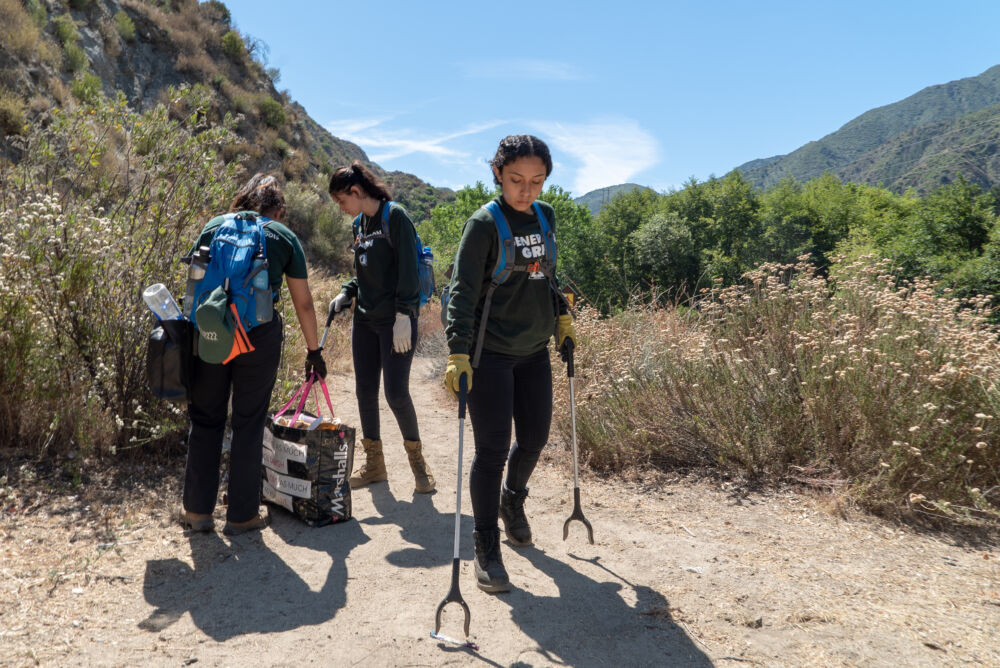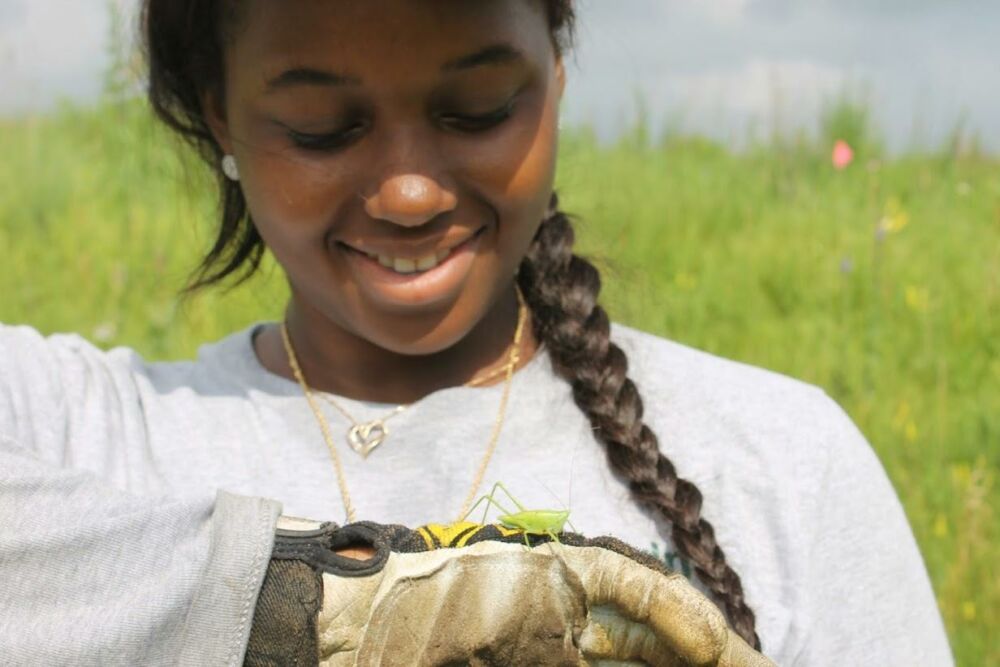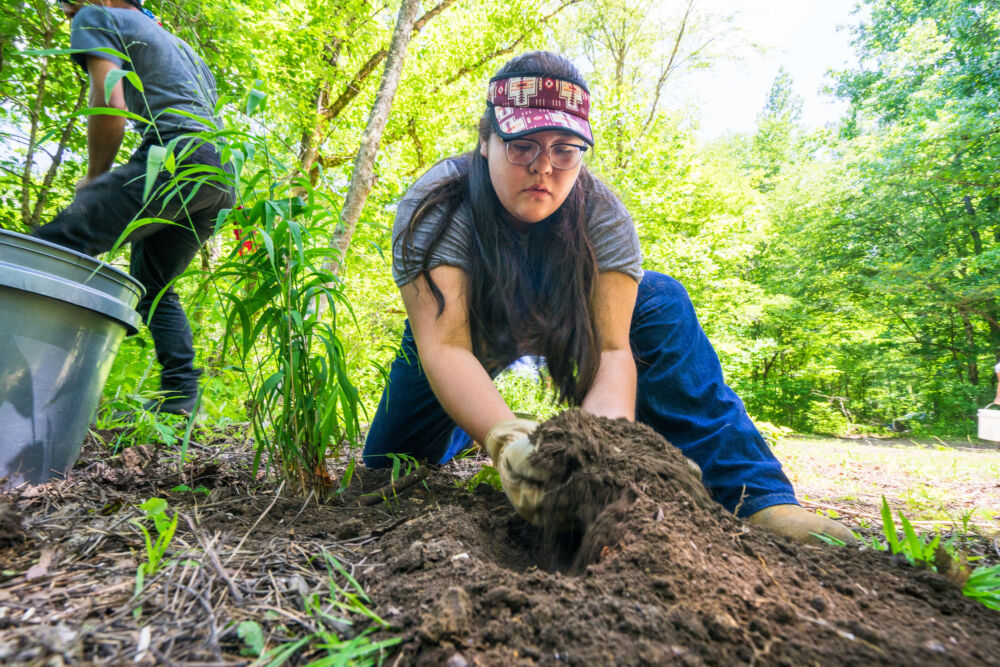Sign-up for our email newsletter and stay connected.
Engaging the Next Generation in Conservation on National Forests

The National Forest Foundation (NFF) engages diverse youth across the United States to nurture the next generation of community leaders and stewards of our public lands. From the urban centers of Chicago and Los Angeles, to as far away as rural Alaska and with local tribes in Georgia, an array of students participate in wide-ranging conservation programs on America’s National Forests.
Each program offers a unique opportunity for young people to experience these amazing places in their community’s backyard, reconnect with their cultural and traditional values, and participate in forest stewardship activities. They also learn about a potential new career path, often earn a stipend and, sometimes, college credit. These programs also advance our mission to inspire personal and meaningful connections to National Forests, the centerpiece of America’s public lands.
The health of America’s National Forests – “The People’s Land” – truly depends on citizens who care about the future of this unique system of public lands. What better way to grow an interest and care for these places than to spend time in them? An engaged youth – our country’s next generation of community leaders and public land stewards – are the key to perpetuating the health of these landscapes in the future. As people learn about what values their National Forests offer, they better understand the restoration and stewardship needs of these treasured places.
This lack of the connection with nature threatens to unravel the care and engagement that healthy communities require. This disconnect from the environment is sometimes called “nature deficit disorder.” Not only does connecting our nation’s youth with the surrounding landscapes help foster environmental stewardship, but a growing body of research indicates that the benefits of a strong connection with nature range from boosting mental vigor and creativity, to reducing obesity and depression.
Through our Youth and Stewardship Initiative, we meaningfully reconnect a younger generation, particularly underserved youth and young people of color, to their backyard National Forests. To nurture the next generation of forest stewards, mentors from the Forest Service, local nonprofits, Tribes, and community provide expertise and learning pathways to develop an interest in conservation values and career opportunities.

“With the guidance of these professionals, the participants learn how to navigate the challenges we face in regard to protecting our public lands, and they also learn how to responsibly enjoy these wild spaces.”
Students are encouraged to take their passions outdoors and learn about the ways in which they can be an integral part of landscape stewardship efforts in and around their own communities.
These landscapes not only showcase the beauty of our country, protect valuable natural and cultural resources, and instill a feeling of awe, but they also provide significant economic contributions to local communities with jobs, mental and physical health improvements, and community wellness. By integrating our youth in conservation initiatives, we are ensuring that our public lands are protected for years to come, and we are also ensuring that our youth develop professional skills and beautiful memories that will last a lifetime.

The interns learn about ecosystem health and management, different types of flora and fauna, and much more through their participation working on the Midewin National Tallgrass Prairie (Midewin). Students engage in pulling weeds, constructing and maintaining trails, planting and harvesting native seeds, and monitoring prairie health and stream water quality. The internship also emphasizes environmental education through work that helps engage the students with a historic and very exciting transformation that Midewin is undergoing from a munition plant back to a prairie.
The interns help with various stewardship projects that include marine debris clean-up, trail maintenance, cultural site inventorying, and invasive species removal. They also learn about the concept of wilderness and natural ecology and explore their ancestral island beyond the boundaries of their village. Admiralty Island, located south of Juneau, and accessed only by water, is an amazing sanctuary for both wildlife and people and provides a perfect backdrop for students to learn about ecology and protected area stewardship.
The island is the ancestral home of the Kootznoowoo Tlingit group and includes the protected Kootznoowoo Wilderness (Kootznoowoo, in Tlingit, translates to “fortress of brown bears”) that boasts the highest density of brown bears in North America and the highest density of bald eagles in the world.
The Junior Field Rangers program provides opportunities for students to learn about their local National Forests and develop interpretive and public speaking skills, fostering the next generation of forest stewards. Each year, local youth receive a California Naturalist certification through University of California extension, as well as college credit from the University of California. Junior Field Rangers also get the opportunity to put their certification and interpretive skills to practice across the Angeles, San Bernardino, and Cleveland National Forests, engaging with visitors and supporting stewardship efforts at each Forest.
Living Learning Lab program offers Los Angeles County high school students the opportunity to learn about their local National Forests. The primary goal of this youth program is to foster a new generation of passionate environmental stewards through experiential education in the Angeles National Forest. During each Living Learning Lab field trip, local high school students visit the Angeles to learn about their local watershed and engage in on-the-ground stewardship projects for a day.
Through our Treasured Landscape initiative, students receive training and work to restore hiking trails, improve salmon habitat and improve remove invasive species on the Mt. Hood National Forest in Oregon. The Mt. Hood National Forest is home to threatened species of salmon that need habitat restoration to help their populations rebound. Also, this National Forest is in need of work on the 1,000 miles of hiking trails that receive regular visitation from hikers, mountain bikers and equestrians.
During the Earth Camp, diverse students are immersed in the wonders of the Coronado National Forest, learn about natural resources and the environment, and participate in on-the-ground restoration actions. In turn, these youth will build outdoor skills and an appreciation of the natural world. They connect to new education and career pathways, and at the same time contribute to Forest Service priorities, improving access to and restoring and protecting unique southern Arizona landscapes, deserts and sky islands.
The four sessions, with a STEAM focus, have a specific Career and Technology Education focus as part of the Tucson Unified School District programming; however, students from any focus could attend any (or all) four sessions. In addition, these sessions can be adapted to other schools interested in participating. The sessions focus on 1) bioscience, 2) engineering, 3) communication and 4) culinary arts and ethnobotany.
This program connects Cherokee history, cultures and landscapes for youth. Two youth crews, each with four youth members and one leader perform a wide variety of activities including trail stewardship; conducting cultural resource surveys to confirm locations of the Trail of Tears National Historic Trail; removing non-native invasive plant species; restoring native river cane to support traditional uses; and improving developed recreation sites.
The United Keetoowah Band (UKB) of Cherokee Indians teach their youth the traditions, language, and stories of their culture which are rooted in their ancestral homelands - now managed as part of the Cherokee National Forest. This Program provides the opportunity for Cherokee tribal youth crews from Oklahoma an opportunity to gain experience in natural resource management, to fully experience their ancestral homelands, engage in hands-on stewardship of natural and cultural resources in the Cherokee National Forest, and strengthen connections to their homeland.
The National Forest Foundation is working with the Flathead National Forest, Salish & Kootenai College Forestry Department (SKC), and Confederated Salish & Kootenai Tribal Forestry on a program to employ SKC students in cross-boundary stewardship of the Mission Mountain range.
The Mission Mountain Divide makes up the eastern boundary of the Flathead Indian Reservation. The east side of the Mission Range is managed by the U.S. Forest Service as Federally recognized Wilderness. The west side of the range is managed by the Confederated Salish and Kootenai Tribes as Tribal Wilderness.
Through this program, students gain skills and professional experience in the field of conservation and natural resource management. By maintaining trails, removing invasive plant species, conducting cultural resource surveys, and engaging in vegetation management such as whitebark pine recovery, students are contributing to meaningful on-the-ground restoration actions. Over the course of the program, students are given educational opportunities to learn about native people’s historic uses of the landscape, traditions, and stories of the Salish, Kootenai, and Pend d’Oreille people.
Rebecca Davidson, Southwestern Regional Director and Youth Programs Director, at [email protected]